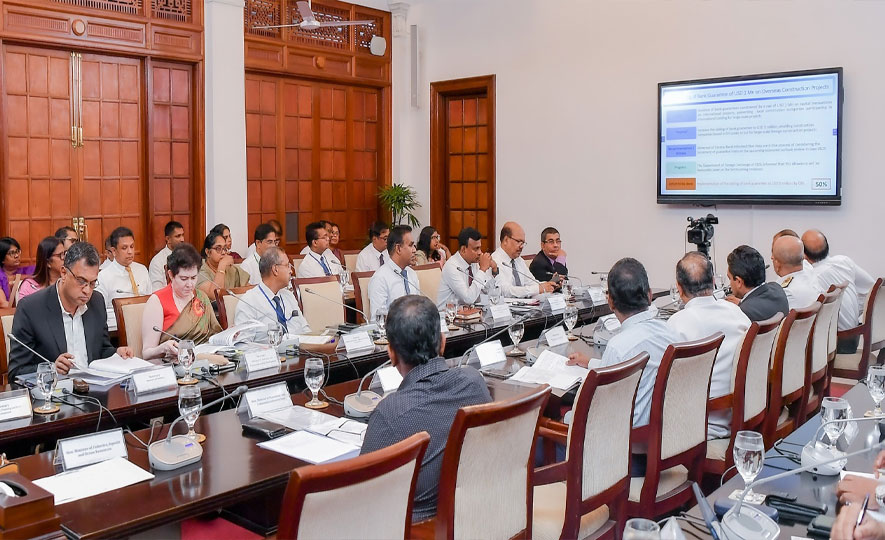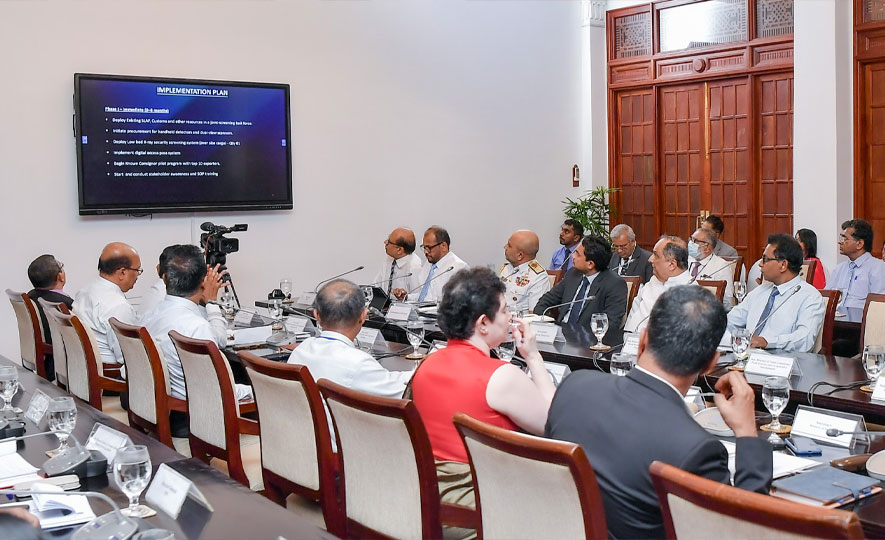Sri Lanka Achieves 6.88% Export Growth in H1 2025, Records Significant Progress on Key Trade Facilitation Initiatives
His Excellency President Anura Kumara Dissanayake yesterday (August 12, 2025) chaired the Second Export Development Council of Ministers Meeting (EDCM) at the Presidential Secretariat, marking significant milestones in Sri Lanka's ambitious journey toward achieving USD 36 billion in annual export revenue by 2030.
The high-level session reviewed substantial progress on ten priority export facilitation initiatives identified during the inaugural council meeting in January 2025, while approving new strategic measures to enhance the country's export competitiveness.
The Export Development Board has made exceptional progress on critical export issues, achieving full implementation of enhanced data collection mechanisms for export services including education, marine, and offshore sectors via the Central Bank’s International Transaction Reporting System (ITRS). Substantial advances include a 75% completion of reviewing import duties and para tariffs for the electrical and electronics sector with proposals submitted to the National Tariff Policy Committee; 50% progress in infrastructure modernization through establishing railway testing facilities for locally manufactured power trains and introducing scanner technology at Katunayaka Cargo Village; and a 50% advancement in financial facilitation by working toward increasing the bank guarantee ceiling from USD 1 million to USD 5 million for overseas construction projects.
Sri Lanka’s export sector demonstrated robust economic resilience in the first half of 2025, with total exports reaching USD 8.35 billion, marking a 6.88% year-on-year increase. Merchandise exports contributed USD 6.50 billion (+5.72% YoY), while services exports surged to USD 1.86 billion (+11.13% YoY). Notable sectoral growth was seen in coconut-based products at 32.40% and apparel & textiles at 8.19%. Strategic markets experienced exceptional expansion, including India (27% growth to USD 505.62 million), the Netherlands (22% to USD 221.66 million), Hong Kong (44% to USD 97.96 million), and Singapore (51% to USD 65.75)
President Dissanayake approved a comprehensive suite of strategic initiatives to boost export competitiveness, including the expansion of Freeport services with a target of 60 operators in three years generating USD 40 million annually, development of Trincomalee Harbour as a Marine Business Hub with enhanced ship repair facilities, and waiving the USD 200 Off Port Limits levy at Galle and Hambantota ports. Agricultural export support measures involve duty set-off schemes for poultry raw materials, authorization for BOI enterprises to import specific spices for value addition and re-export, the growth of gem and jewelry exports, and financial assistance for tea smallholder infilling programs. Additionally, the President directed fast-tracking preliminary assessments for Free Trade Agreements with China, the USA, the European Union, and Middle Eastern nations, focusing on sectors where Sri Lanka holds competitive advantages.

The President approved targeted reform measures for key export sectors, including removing the three-brand name limitation and fast-tracking the elimination of the 18% VAT on packaging materials in the pharmaceutical industry. To enhance energy efficiency, workshops will be organized in collaboration with the Ministry of Energy and the Ceylon Electricity Board to support high electricity-consuming export companies and promote renewable energy adoption. In the coconut sector, a comprehensive strategy aims to achieve USD 2.5 billion in export revenue by 2030, featuring short-term import permissions for fresh coconuts for verified exporters and a long-term Northern Region Plantation Expansion Program.
President Dissanayake emphasized the urgent establishment of an Investment Facilitation Committee to streamline export-oriented investment processes and attract foreign direct investment. He directed all ministries and agencies to expedite implementation of approved measures and provide monthly progress reports.
"The export sector remains the backbone of our economic recovery," stated President Dissanayake. "We are committed to systematic removal of bottlenecks, infrastructure modernization, and strategic market diversification to ensure Sri Lanka achieves its ambitious export targets while enabling our exporters to compete effectively in global markets."

Minister of Plantation and Community Infrastructure, Mr. Samantha Vidyaratne; Minister of Rural Development, Social Security and Community Empowerment, Mr. Upali Pannila; State Minister of Industry and Entrepreneurship Development, Mr. Chathuranga Abeysinghe; Governor of the Western Province, Mr. Haniff Yusuf; Secretary to the Ministry of Defence, Air Vice Marshal Sampath Thuyyakontha; Secretary to the Ministry Industry and Entrepreneurship Development, Mrs. Thilaka Jayasundara; Chairman of the Board of Investment of Sri Lanka, Mr. Arjuna Herath; and Chairman of the Sri Lanka Export Development Board, Mr. Mangala Wijesinghe, along with senior officials representing the Sri Lanka Ports Authority, the Board of Investment of Sri Lanka, and the Sri Lanka Export Development Board, also participated in this discussion.
The Third Export Development Council meeting is scheduled for November 2025, where officials will review the progress of implementation and address new export facilitation needs to ensure continued momentum toward strategic export goals.